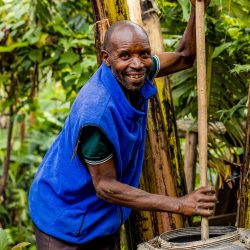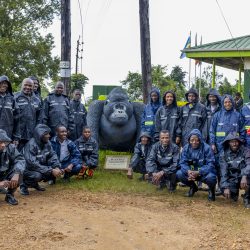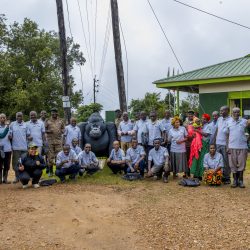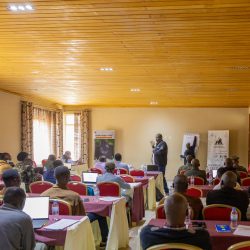Counting of mountain gorilla nests and poo begins
Blog | 12/09/11
The 2011 census of the mountain gorillas in Bwindi Impenetrable National Park in Uganda has begun, despite the rains. After a three-day training session, the teams are out counting gorillas, but not like you would imagine. They are counting them indirectly through the meticulous documentation of the night nests and poo that are found.
It will be after all this data is collected, analyzed, and cross-checked with genetic samples that we will know the total number of mountain gorillas in Bwindi during the time the census was conducted. You can look at it like a snapshot of the population at one point it time. This snapshot will be compared with results from the last complete census, conducted in 2006.
Here below is IGCP’s Dr. Augustin Basabose giving us a much more scientific summary of how the training session went:
As planned, we started the census this Wednesday 07 September with a pre-census training in different methods to use during the Bwindi gorilla census.
Six teams of six persons each coming from different organizations, including UWA, IGCP, MPI, ITFC, RDB and KRC are participating to the first phase of the census which will last two weeks. Other organizations including ICCN, CTPH will join the census team during the second two weeks phase starting on 24th September 2011.
The goals of Bwindi census were as follows:
1. Estimate the total population size of Bwindi gorilla
2. Collect information on illegal activities and large mammals
3. Compare the census results from previous gorilla census
4. Assess the health of Bwindi gorilla population by analyzing parasites, virus and bacteria
During the pre-census training, participants were introduced to different field techniques including:
a. Techniques to count individual gorilla in Bwindi population
b. Techniques to collect gorilla fecal samples for genetic and pathogenic analysis
c. Training on the use of Compass, GPS and Mapping including interpretation of contour lines during the census
d. Training in First Aid by the Bwindi Community Hospital team

An RDB ranger practices collecting fresh gorilla fecal sample for genetic and pathogenic analyses. Photo by Augustin Basabose/IGCP.
After the classroom training on different components of the census, the six teams went for a field work to practice the different techniques learned. Blessed by heavy rain, we divided ourselves into two groups with one group following the habituated Bitukura gorilla family and another one following the habituated Oruzogu gorilla family. The purpose of the field exercise was to practice in collecting data on the reconnaissance route, collecting fresh gorilla fecal samples in gorilla fresh nest sites for genetic and pathogen analysis. Genetic analysis will help as to reduce the inaccuracy of the sweep method, using genetic identities (obtained from fresh fecal samples) of individual gorillas. During the field visit we also practiced the use of compass for orientation, the GPS for positioning and the topographic maps (with contour lines) in the forest. In the nest site we practiced the different techniques of fecal sample collection for genetic and pathogenic analysis.
Read the full news release about this census of mountain gorillas.
Photo by Maryke Gray/IGCP




